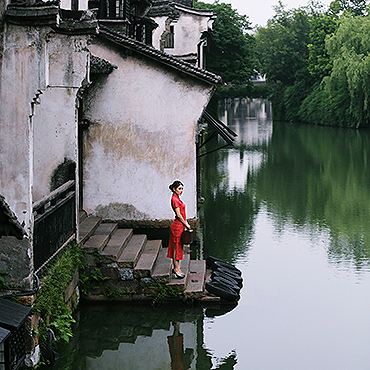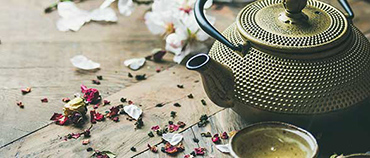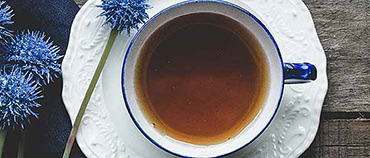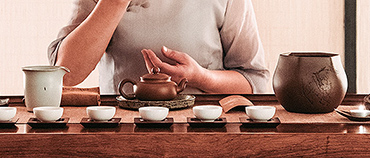
The best Chinese tea? Do this countdown with us
Wherever you go in China, you’ll hear claims from locals that the best Chinese tea is to be found in their region. Irrespective of whether it’s north, south, or anywhere in between, it seems claimants for China’s best tea are everywhere.
Now we totally understand that perspective.
It’s true, there are a lot of wonderful Chinese teas. It’s also true these teas are discoverable in every corner of the country. From the Fujian mountains to the hills of Hangzhou , there is diversity in types of Chinese tea and benefits which any drinker yields from their consumption.
With the best teas in China title up for debate, the team at ChinaTours.com figured it was worth throwing our yuan’s worth into the mix. After all, we are tea lovers too. In fact, some of our team could be considered just a *little* tea crazy. As travelers like you, we love sourcing the best of the best and we figured it’s only fair to share our love of tea with you.
So here it is. The ultimate list of best Chinese teas according to ChinaTours.com.
Before we get to the bottom of the tea cup of China’s best teas, it’s probably a good idea to recap on some Chinese tea essentials. Bear in mind many factors influence the creation of a tea from the ‘best of’ list: the environment in which it’s grown, how it’s processed, the way it’s stored. Make no mistake. A ‘best Chinese tea’ is never a stroke of luck. No, the Chinese approach to tea, beautifully described in The Classic Art of Tea well over 1,300 years ago, is a serious business. According to the book’s author, Lu Yu, who is revered as the ‘Sage of Tea’ and who established traditions and practices that endure today, there is a definitive art to growing, processing, and drinking Chinese tea, irrespective of where it’s grown.
That said, there are certain locations throughout China that offer more favorable conditions for growing tea. It’s these locations which are fundamental to assuring tea quality. It’s why we’ve put together our list based on the places where the tea is grown.
So, to the list. Let’s do this!
#10 Liu’an Guapian (六安瓜片) – Green tea

A staple on just about any list of China’s best teas, Liu’an Guapian is a green tea with an enviable reputation. Grown in Liu’an county in Anhui Province (a land-locked region in China’s east), teapedia.org states the literal translation for Liu’an Guapian Tea is Liu’an Melon Seed. Why melon seed? Well, the Chinese with their poetic descriptions for just about everything think the oval, flat shape of dried leaves bear a striking resemblance to melon seeds.
Whether you agree or not, the uniqueness of the tea’s processing is enough to make even a novice tea drinker sit up and pay attention. Liu’an Guapian tea is processed from the second leaf on the branch, rather than leaf buds like most other Chinese teas. The central vein of each leaf is removed (yes, by hand), and the leaves are then pan-fried and shaped, a process which prevents oxidation. If green tea is your thing, then it’s hard to pass up on Liu’an Guapian.
#9 Anxi Tieguanyin (安溪铁观音) – Oolong tea

With Anxi Tieguanyin, we move into the realm of oolong tea. From Fujian province, Anxi Tieguanyin tea reflects all the health-giving qualities of a traditional oolong tea – vitamins, minerals, amino acids, beneficial tea polyphenol antioxidants that protect liver cells, lower blood pressure and produce the best weight loss effect of all Chinese tea varieties. The history of Anxi Tieguanyin tea is one based on legend.
Depending on who you believe there are variations, however suffice to say the origins of Anxi Tieguanyin tea may have been humble, but it’s position in the best ten Chinese teas means a high level of respect is warranted. Correct processing Anxi Tieguanyin tea is vitally important because even if the growth and harvesting are done right, without proper processing, the tea’s quality can be negatively affected. When you drink a cup of Anxi Tieguanyin tea, you’re definitely drinking a brew steeped in folklore.
#8 Yunnan Pu’er (云南普洱) – Fermented tea

Looking for a tea that will last the distance? You’ll find it with Yunnan Pu’er. In a class of its own, Yunnan Pu’er, is made from large leaf varieties of camellia sinensis. What’s special about this tea? Yunnan Pu’er earns its place in the best Chinese tea list because it can be aged for decades or longer, just as you’d do with a collectible bottle of wine. The fermentation process used to produce Yunnan Pu’er allows it to be aged, allowing the tea to gain in flavor and texture.
#7 Qimen Black Tea 祁门红茶 – Black tea

A famous Chinese black tea, Qimen tea first emerged during the nineteenth century. Also grown in Anhui Province like Liu’an Guapian tea, Qimen has distinctive flavor blends that make it sound more like a bottle of wine than a health-giving tea. Perhaps another reason Qimen tea is so highly valued is because of the particularly slow withering and oxidation processes that are applied to draw out its aroma and flavor. As a black tea, Qimen has gained popularity in the west, so it may just find its way into your trove of travel mementos on a China tour.
#6 Huangshan Maofeng (黄山毛峰) – Green tea

Drama and tragedy befall even the great among us so it’s no surprise to learn that Huangshan Maofeng green tea is a brew steeped in a saga. If you can’t go past an enduring love story, this is definitely a tea to add to your stash. It’s said that Huangshan Maofeng green tea grew out of the love between a beautiful young woman and her scholar beau. The local landowner wanted the girl for himself, and while he took steps to thwart their love when the girl discovered her lover had been murdered, the tears she cried over his grave became the rain, while the grave metamorphosed into a tea tree. Now if that’s not enough to soften the heart of any hardened tea critic, nothing will! Do yourself a favor and try a cup of Huangshan Maofeng green tea – and feel the love!
#5 Junshan Yinzhen (君山银针) – Yellow tea

On the hunt for a famous Chinese tea? Look no further. Apparently a personal favorite of the late Mao Zedong, Junshan Yinzhen tea is a rare and treasured thing. Although it is identified as a yellow tea, Junshan Yinzhen is sometimes sold as a white tea, making it even more special for collectors and novices alike. Junshan Yinzhen tea grows on Junshan Island (in Hunan Province’s Dongting Lake to be exact). As it happens, this is perfect tea growing territory. Yellow tea differs from other teas in its production. Instead of being rolled and shaped, yellow tea buds are sorted by hand, heated, and wrapped in small bundles. In the final step, the tea is dried. Sweet and fruity in flavor, the location where it’s produced, and the laborious production process, means there is only a limited amount of tea produced each year. Time to save up and savor!
#4 West Lake Longjing (西湖龙井) – Green tea

Longjing – or Dragon Well – tea grown around Hangzhou, is the most expensive and arguably the best green tea in China. Rich in health giving properties, Longjing tea has been heralded as a salvation for a whole host of ailments: detoxing, eyesight improvement, oral health, cancer prevention, improving heart health, weight loss, protection against ionizing radiation, and more. With a list of benefits like that it’s easy to understand why it was deemed gong cha, or tribute tea.
#3 Xinyang Maojian (信阳毛尖) – Green tea

A product of Xinyang in Hubei province, Xinyang Maojian green tea earns its place in the list of China’s best teas for many reasons, not least of which are its distinctive characteristics – the dark green leaf color and the long, thin leaf shape. There are many things that must be in alignment to produce the perfect Xinyang Maojian tea. Among them is the ideal time at which the tea leaves should be harvested, namely in spring and fall. The very best quality leaves? Well, they’re harvested mid-April. These tea leaves are so rare, they are sold at more than two or three times the price of tea leaves harvested after this time. Hmm, it might be an idea to add this to your list of must-haves when searching for the best Chinese teas.
#2 Dongting Biluochun (洞庭碧螺春) – Green tea

Yet another green tea, Dongting Biluochun is translated literally as ‘green snail spring’ for its resemblance to a tightly wound spiral. Delicate and delicious in flavor, Dongting Biluochun has been appreciated by peasants and princes over the years. It is grown in Suzhou, Jiangsu and is arguably Chinese very best green tea, but we’ll leave that decision to you!
#1 Wuyi Mountains Da Hong Pao (武夷山大红袍) – Oolong tea

The origins of Wuyi Mountains Da Hong Pao oolong tea conjure up the classic image of Chinese tea heritage. Picture a glorious mountain in Fujian province. Add a tale of imperial proportions that resulted in the healing of a Ming dynasty emperor’s mother. Steep it in a rich history of evolving production techniques and you’ll have arrived in ‘black dragon’ tea territory. Fragrant, dark, and sought after internationally, you may just need to visit a Wuyi plantation while on tour to gain an appreciation of the age-old traditions for planting, picking, and processing this most illustrious of tea leaves. But be prepared to pay. Wuyi Mountains Da Hong Pao tea is the most expensive tea in the world. And that makes it a truly precious brew!
Can’t decide which of the best Chinese teas to start with? Relax! A visit to one of the Chinese many quality tea shops is an education process in itself. When you travel with us, we can take you there. Whether it’s a single stop or an all-encompassing Chinese tea tour, we’ve got you covered.
ChinaTours.com is dedicated to helping western travelers from the United States, United Kingdom, Australia, Canada, and elsewhere enjoy an authentic experience of China, including adventurers on the hunt for the very best Chinese tea. We are passionate Chinese tea drinkers too. In fact, we source the tea we drink from all corners of China – and would love to take you there. If you’d like to learn how to choose Chinese tea like a local, or even take a totally food-focused tour of China, just let us know. We’re here to share your travel passion. Enquire via our contact form and we’ll respond within 24 hours.




 Great tour with Linda in Beijing
Great tour with Linda in Beijing








